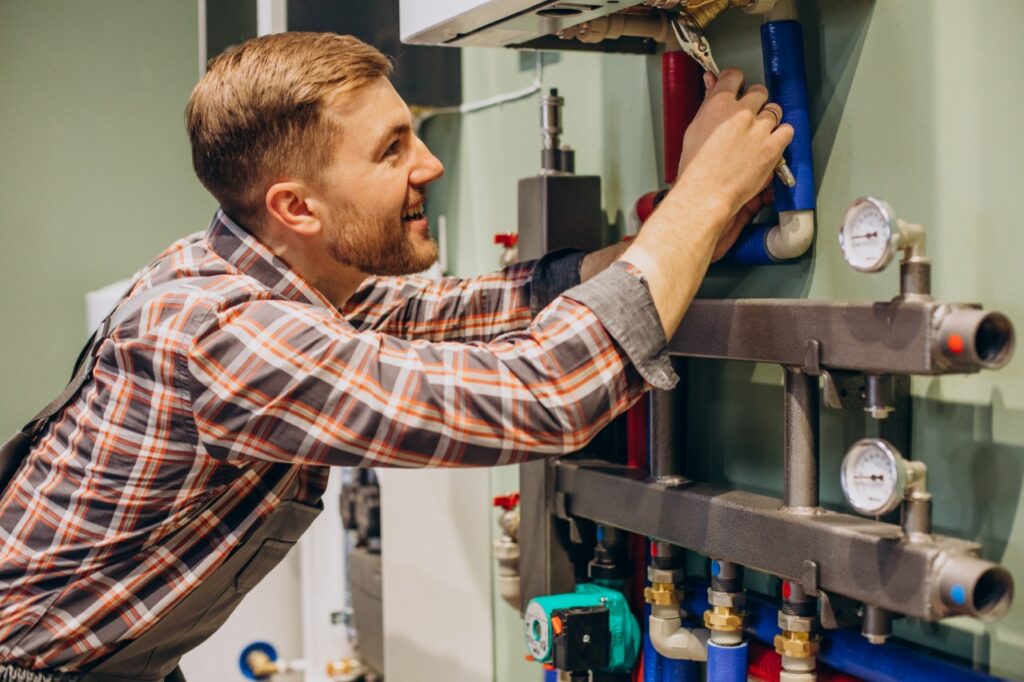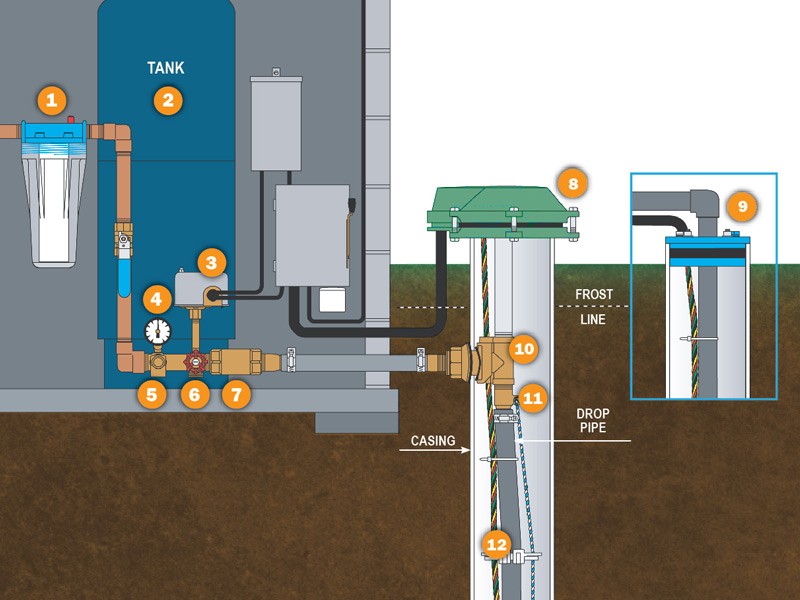We have discovered this great article relating to Plumbing Installation 101: All You Need to Know directly below on the internet and believe it made sense to write about it with you on my blog.

Understanding just how your home's plumbing system works is vital for every single house owner. From providing clean water for alcohol consumption, food preparation, and showering to securely removing wastewater, a properly maintained pipes system is vital for your household's health and convenience. In this comprehensive overview, we'll discover the detailed network that comprises your home's plumbing and offer tips on upkeep, upgrades, and taking care of usual concerns.
Intro
Your home's pipes system is more than simply a network of pipelines; it's an intricate system that guarantees you have accessibility to tidy water and reliable wastewater elimination. Recognizing its elements and how they work together can aid you protect against pricey fixings and make certain every little thing runs efficiently.
Fundamental Parts of a Plumbing System
Pipes and Tubing
At the heart of your pipes system are the pipelines and tubes that bring water throughout your home. These can be made from different materials such as copper, PVC, or PEX, each with its benefits in regards to longevity and cost-effectiveness.
Components: Sinks, Toilets, Showers, and so on.
Components like sinks, bathrooms, showers, and tubs are where water is utilized in your home. Understanding just how these components link to the plumbing system helps in detecting issues and planning upgrades.
Shutoffs and Shut-off Factors
Valves control the circulation of water in your pipes system. Shut-off valves are crucial throughout emergency situations or when you need to make repairs, permitting you to separate parts of the system without interrupting water circulation to the entire house.
Water System
Main Water Line
The main water line attaches your home to the community supply of water or a private well. It's where water enters your home and is distributed to various components.
Water Meter and Pressure Regulatory Authority
The water meter steps your water use, while a stress regulator makes certain that water streams at a safe stress throughout your home's plumbing system, protecting against damage to pipelines and fixtures.
Cold Water vs. Warm water Lines
Understanding the difference between cold water lines, which provide water directly from the major, and hot water lines, which carry warmed water from the water heater, aids in troubleshooting and preparing for upgrades.
Drain System
Drain Pipes Pipeline and Traps
Drain pipelines bring wastewater far from sinks, showers, and bathrooms to the sewer or sewage-disposal tank. Traps stop sewage system gases from entering your home and also catch debris that can cause obstructions.
Ventilation Pipelines
Air flow pipes permit air into the water drainage system, avoiding suction that can slow drain and cause traps to vacant. Proper air flow is essential for preserving the honesty of your plumbing system.
Relevance of Proper Drain
Ensuring appropriate water drainage prevents back-ups and water damages. Frequently cleansing drains and preserving catches can prevent expensive repair services and expand the life of your plumbing system.
Water Heating Unit
Sorts Of Hot Water Heater
Water heaters can be tankless or standard tank-style. Tankless heating systems heat water on demand, while storage tanks save heated water for instant usage.
Just How Water Heaters Connect to the Plumbing System
Comprehending just how hot water heater connect to both the cold water supply and hot water circulation lines aids in diagnosing issues like inadequate hot water or leakages.
Maintenance Tips for Water Heaters
Frequently purging your hot water heater to get rid of debris, examining the temperature level setups, and checking for leakages can prolong its life expectancy and enhance power effectiveness.
Typical Plumbing Issues
Leaks and Their Reasons
Leakages can take place because of maturing pipes, loose installations, or high water stress. Attending to leakages immediately prevents water damages and mold and mildew development.
Blockages and Blockages
Clogs in drains pipes and commodes are commonly triggered by flushing non-flushable items or a build-up of oil and hair. Utilizing drain screens and bearing in mind what goes down your drains can prevent clogs.
Indicators of Pipes Troubles to Expect
Low tide stress, sluggish drains, foul odors, or uncommonly high water bills are signs of potential plumbing troubles that need to be resolved without delay.
Plumbing Maintenance Tips
Regular Examinations and Checks
Set up yearly plumbing evaluations to catch issues early. Seek indicators of leakages, rust, or mineral buildup in faucets and showerheads.
Do It Yourself Upkeep Tasks
Easy jobs like cleaning tap aerators, looking for toilet leaks utilizing color tablet computers, or shielding exposed pipes in cold environments can avoid significant plumbing concerns.
When to Call an Expert Plumber
Know when a pipes issue calls for professional experience. Attempting intricate repair services without correct knowledge can bring about more damages and higher repair service prices.
Upgrading Your Pipes System
Reasons for Updating
Upgrading to water-efficient fixtures or changing old pipes can boost water quality, minimize water bills, and enhance the worth of your home.
Modern Pipes Technologies and Their Benefits
Discover technologies like smart leakage detectors, water-saving commodes, and energy-efficient water heaters that can conserve cash and decrease ecological impact.
Expense Factors To Consider and ROI
Calculate the in advance expenses versus lasting savings when thinking about pipes upgrades. Many upgrades spend for themselves via lowered utility bills and fewer repair services.
Ecological Impact and Conservation
Water-Saving Fixtures and Devices
Installing low-flow faucets, showerheads, and commodes can substantially reduce water usage without giving up performance.
Tips for Lowering Water Use
Easy behaviors like fixing leakages without delay, taking shorter showers, and running full lots of laundry and dishes can save water and reduced your energy costs.
Eco-Friendly Plumbing Options
Consider sustainable plumbing products like bamboo for floor covering, which is durable and green, or recycled glass for kitchen counters.
Emergency Readiness
Actions to Take Throughout a Pipes Emergency situation
Know where your shut-off shutoffs lie and how to turn off the water in case of a ruptured pipeline or significant leak.
Importance of Having Emergency Contacts Useful
Keep contact information for local plumbings or emergency services readily offered for fast feedback throughout a pipes situation.
Do It Yourself Emergency Situation Fixes (When Suitable).
Short-term fixes like using air duct tape to spot a dripping pipeline or putting a bucket under a dripping tap can decrease damages till an expert plumbing arrives.
Final thought.
Recognizing the anatomy of your home's pipes system empowers you to preserve it properly, saving money and time on fixings. By adhering to routine maintenance routines and staying educated concerning contemporary plumbing technologies, you can ensure your pipes system operates efficiently for many years to come.
Exploring Your Homes Plumbing Anatomy
Water Supply System
Main Water Line: This is where water enters your home from the municipal supply or a private well.
Water Meter: Typically located near where the main water line enters the property, it measures the amount of water used.
Shutoff Valve: It s crucial to know where this is in case of emergencies. It allows you to turn off the water supply to the entire house.
Pipes and Fittings: These distribute water throughout your home. Materials can include copper, PVC, or PEX.
Drain-Waste-Vent (DWV) System
Drains: Located in sinks, showers, and tubs, these carry wastewater away.
Traps: U-shaped pipes under sinks that hold standing water, blocking sewer gases from entering the home.
Vents: Pipes that lead from the DWV system to the outside, preventing vacuum formation and allowing gases to escape.
Sewer Line: Carries all wastewater from the home to the municipal sewer system or a septic tank.
Fixtures and Appliances
Sinks, Toilets, and Showers
Dishwashers and Washing Machines
Water Heaters
Maintenance Tips
Regularly check for leaks in exposed pipes and around fixtures.
Inspect the water heater annually for signs of wear.
Clean drains and traps to prevent clogs and odors.
Know how to shut off water to individual fixtures.
When to Call a Professional
Major leaks or burst pipes
Installation of new pipes or fixtures
Septic tank issues
Remodeling projects that involve plumbing changes
Conclusion
Understanding the anatomy of your home's plumbing is key to maintaining a functional and efficient system. Regular checks and knowing when to call in the experts can save you time, money, and stress.
https://www.mavyn.com/blog/exploring-your-homes-plumbing-anatomy

Exploring Your Homes Plumbing Anatomy
Water Supply System
Drain-Waste-Vent (DWV) System
Fixtures and Appliances
Maintenance Tips
When to Call a Professional
Conclusion
Understanding the anatomy of your home's plumbing is key to maintaining a functional and efficient system. Regular checks and knowing when to call in the experts can save you time, money, and stress.
https://www.mavyn.com/blog/exploring-your-homes-plumbing-anatomy
I have been very drawn to Anatomy of a House: Understanding the Components and I am hoping you enjoyed the new blog post. Loved our blog? Please share it. Help other people discover it. We value your readership.
Schedule Now